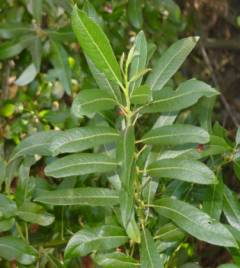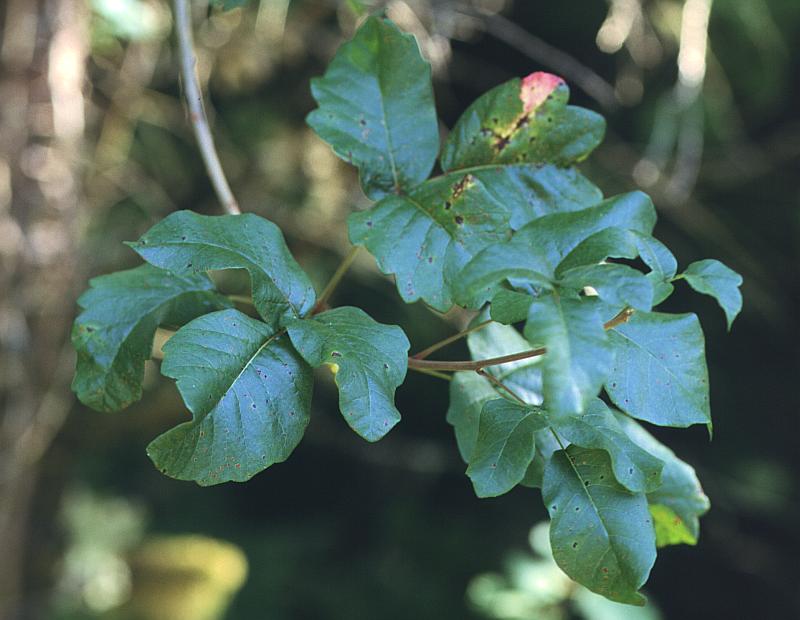cheeseweed

Leaves are edible raw in salads or can be cooked and eaten like spinach. They can be dried and infused in tea as a good source of vitamins & minerals with significant calcium, vitamin A, & vitamin C. Small round seed pods can also be eaten
mustard (Brassica spp.)

Leaves can be eaten raw or cooked like spinach (young leaves are the most tasty). Rich source of vitamins A, B1, B2, & C as well as calcium. The tender stalks can also be eaten
nasturtium (Tropaeolum majus)

Every part of the plant is edible. Peppery tasting leaves can be eaten raw in salads or cooked. It is a rich source of vitamin C.
plantain (Plantago lanceolata)
english plantain, white man's foot, ribwort

Young tender leaves can be eaten in salads or cooked like spinach. Leaves that have become more fibrous with age need longer cooking. Rich source of calcium and beta carotene. Seeds are also edible. Leaves have a healing effect on ulcers. Plant also has many other healing properties.
prickly pear (Opuntia spp.)

All of the many varieties of Opuntia produce edible fruit and pads. The ripened fruits are somewhat sweet and delicious. The fresh young pads, called nopales, will fry up ijnto a delectable vegetable. Scrape, peel & slice before frying. The pads can also be eaten raw and added to salads. Used by many to cure diabetes.
Thistle (Cirsium spp.)

Leaves are prickly or spiny. Edible stalk can be eaten like celery. Roots are edible when young (they become too fibrous when they mature). Thistle flowers can be prepared and eaten like artichokes.
watercress (Nasturtium officinale)

(thanks to www.greenharvest.com.au for the watercress image)
Can be eatin in salads or lightly cooked. Excellent source of vitamins and minerals including vitamin C & E. It grows in slow streams, along riverbanks, and roadside ditches.
mule fat (Baccharis salicifolia)

Leaves look similar to the willow, but are dark green on both sides. The young shoots are edible cooked. The leaves have been used as a tonic wash for the scalp and hair to prevent baldness. A charcoal made from the stems has been used to make gunpowder. A decoction of the leaves and stems has been used as a female hygienic agent. An infusion of the leaves has been used as an eyewash and has also been applied to bruises, wounds or insect stings.
willow (salix lasiolepis)
pacific willow

An infusion of the bark has been used in the treatment of colds, chills, fevers, measles and various diseases where sweating can be beneficial[257]. A decoction of the bark has been used as a wash for itchy skin.
The stems have been used in basket making. The stems have been split for making coiled baskets or as for the weft in twined baskets, whilst they are used unsplit as the warp in twined baskets. The plant is usually coppiced annually when grown for basket making, though it is possible to coppice it every two years if thick poles are required as uprights. The tough inner bark, harvested in the spring, has been used to make rope and clothing. The wood is close-grained, light, soft and weak, but has been used for fuel and to make charcoal (Plants For a Future).
poison hemlock (Conium maculatum)


Extremely poisonous if eaten! Sometimes mistaken for parsnip, parsley, fennel, or wild carrot. Ferny looking plant typically grows up to around 7 feet. There are no hairs on any parts of the plant and it emits a nauseous odor when rubbed or bruised. The hollow stalk main stock and stems are covered with characteristic irregular purplish blotches and dots.
poison oak (Rhus diversiloba)

All parts of the plant contain resinous phenolic compounds known as urushiols. Direct contacr with the plant, exposure to smoke or fumes from a burning plant or even contact with pets or animals that have touched the plant can cause severe allergic dermatitis in some individuals. There is usually a latent period of about 12 - 24 hours from the moment of contact, this is followed by a reddening and severe blistering of the skin.

5 comments:
Cool Marc! Here's just a quick list of plants to add, perhaps:
Yellow Dock,
Wild/prickly lettuce,
filaree,
geranium,
bladder flower and others mentioned at that link, white sage, black sage (the one you eat the seeds of?), grasses in general, arundo donax (river cane), cattail, oak, serviceberry, yucca, wild cucumber, --there, I'm hitting a wall now.
Loquot.
Someone harvested milkweed greens by mistake on Saturday, I think! (They are only edible if prepared specially, I believe). Ceanothus. Laurel Sumac. Aloe. Agave. Iceplant.
So, this is a big job.
Thanks Colin! I will add these on to the page.
Hi Marc,
This is a good rave - letting people know that food is not just a supermarket commodity. As the owner of the watercress image you have used can I just suggest that it is always appropriate to acknowledge the source where you can. Frances
www.greenharvest.com.au
done. thanks frances.
Hi! I happened upon your blog here looking for info on wild growing celery we found on a hike today. It appears to be a rather non-native plant perhaps? Any info on it at all, I'm not finding much online info at all. Is it invasive? Is it edible.
Post a Comment